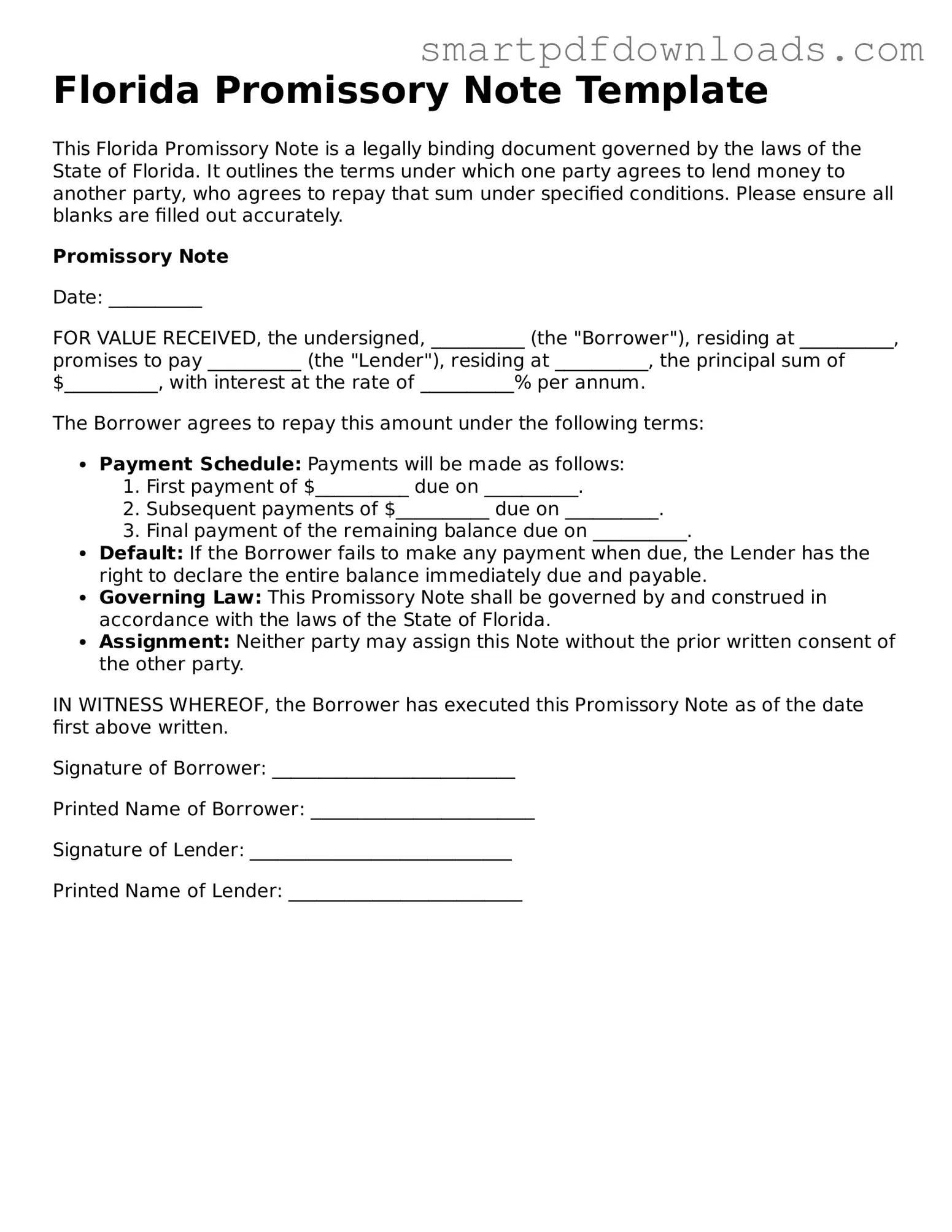Florida Promissory Note Template
This Florida Promissory Note is a legally binding document governed by the laws of the State of Florida. It outlines the terms under which one party agrees to lend money to another party, who agrees to repay that sum under specified conditions. Please ensure all blanks are filled out accurately.
Promissory Note
Date: __________
FOR VALUE RECEIVED, the undersigned, __________ (the "Borrower"), residing at __________, promises to pay __________ (the "Lender"), residing at __________, the principal sum of $__________, with interest at the rate of __________% per annum.
The Borrower agrees to repay this amount under the following terms:
- Payment Schedule: Payments will be made as follows:
- First payment of $__________ due on __________.
- Subsequent payments of $__________ due on __________.
- Final payment of the remaining balance due on __________.
- Default: If the Borrower fails to make any payment when due, the Lender has the right to declare the entire balance immediately due and payable.
- Governing Law: This Promissory Note shall be governed by and construed in accordance with the laws of the State of Florida.
- Assignment: Neither party may assign this Note without the prior written consent of the other party.
IN WITNESS WHEREOF, the Borrower has executed this Promissory Note as of the date first above written.
Signature of Borrower: __________________________
Printed Name of Borrower: ________________________
Signature of Lender: ____________________________
Printed Name of Lender: _________________________
